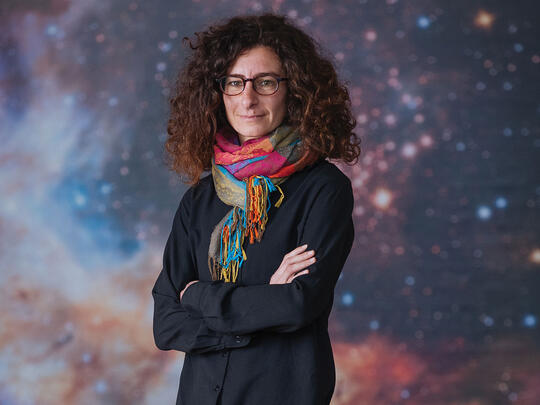Expanding by almost 20 percent over the last two decades, the Denver, Colorado area is one of the fastest growing regions in the United States. Young professionals flock there for the thriving economy, reasonable cost of living, and the staggering natural beauty of its location, where they can recreate in a backyard outdoor paradise knit by state parks, mountain trails, and ski resorts. Accomplished urban designer Lilly Djaniants understands her city’s dazzling appeal, but alsowarns that ensuring the Mile-High City retains its Rocky Mountain high will require more than sunshine, fresh air and good intentions.
“Rapidly-expanding cities like Denver can struggle to keep pace with their growth,” she cautions. “They strain to provide the basics of urban life that made them attractive in the first place; from public transportation and housing to preserving green space. Suburban sprawl creates commuting nightmares while the cities get clogged with traffic and emissions. My job is to think about the twenty-plus year trajectory that combines mobility and public transportation, affordable housing and public amenities.”
As Senior Urban Planner and Urban Designer for the City and County of Denver, Djaniants has a complex role that works across disciplines and with multiple agencies, balancing the myriad needs of a burgeoning population with mindful stewardship of its natural resources. And while she was trained to solve immediate and sometimes urgent urban problems, Djaniants must also think beyond the next five years, weighing public sentiment and government policy. Solidly grounded in the realities of municipal budgets and regulations, Djaniants simultaneously brings a futurist’s boundless exuberance to her role.
“We have to stop thinking of cities the way we did in the 1960s.”

“In 2007 the UN reported that for the first time, more people lived in urban than in rural areas. This was a significant turning point for cities, and it is projected that by 2050, 67 percent of the world’s population is going to live in urban cities. Back in 1960s, only about 34 percent of people did. We have to stop thinking of cities the way we did sixty years ago, stacking people into boxes and assigning them one space per vehicle in the garage,” Djaniants continues. “I cannot wait for driverless vehicles; I want them now! In 20 years, we’re not going to have a need for single-occupancy vehicles. Instead, we’ll have multi-passenger vehicles floating around, and you hop on and off.”
Djaniants acknowledges that the last thing one might associate with Colorado is density. “While density is good because it means there’s a strong economic growth, it must be thoughtfully balanced with equity addressing affordable housing and community benefits,” she explains. “All of that must be supported with strong public transportation; for example, a well-connected light rail system, otherwise the city will become impossibly congested with traffic, pollutants and parked cars.”
There’s an embrace of technology, and how it can be used to not only to speed things up—but to preserve and protect.
In her current role, Djaniants regulates design for the city and county; overseeing high-density development by creating design standards and guidelines, a regulatory tool used in new developments to promote quality of building design and character. She is also able to bring her futuristic vision to her vital roles on numerous community and neighborhood planning committees and their implementation teams. In these committees and teams, a multi-generation trajectory for future development is planned on a holistic level, with a cross-section of stakeholders involved.
“We work as a team with what already exists, but I often fantasize designing cities from scratch, almost on a philosophical level. So much is going to change due to robotics and automation,” she enthuses. “There are technological advances that are happening in chemistry and biology now, for example, with entirely new technologically-engineered materials that can be applied in the building environment. In addition, robotic construction is going to advance, so in the not-too-distant future, many things about the construction industry as we know it today will become obsolete, just due to this continually advancing technology. Instead of submitting plans to a construction firm, you’ll transmit them digitally to a center where automatons will execute them.”

Djaniants has been central to the planning of Denver’s accelerated growth for three years. Like many other young professionals in that city, her journey to Denver was anything but linear. Born in Baku, Azerbaijan, her family fled to Armenia when she was nine years old. Living there as an ethnic Armenian but without the language, she felt culturally isolated, and struggled to relate to her new country. She knew her family was Armenian, but she spoke only Russian, and was sent to a Russian-speaking school. When her family then immigrated to North Carolina a few years later, a second adjustment to life, now as a Russian/Armenian/American, led her to an awareness of the complexity and importance of living environments, and a curiosity about how to improve them.
Armed with a Bachelors of Architecture degree from North Carolina State University, Djaniants moved to NYC, where she worked in high-end architectural firms for several years. A volunteer opportunity with the Birthright Armenia organization brought her back to Armenia, and unexpectedly, the trip sparked a keen interest in her heritage. Djaniants completed her volunteer stint, and, recognized for her advanced talents, was persuaded to stay in Yerevan as construction manager on the grand-scale TUMO Center for Creative Technologies. It was during this period, as she built the futuristic design and technology center that will educate generations of Armenians, that Djaniants connected ever more deeply with her roots, learning for the first time about Armenia and its complex ethnic and political history.
“I met an incredible number of intellectual Armenians who had repatriated to Armenia from United States,” she says. “They exposed me to the importance of being engaged and committed to the country of Armenia. Initially I didn’t go there intending to commit myself to that extent. But the more time I spent there, the deeper my connection grew, and I felt a yearning to contribute what I could to the country’s future.”
Fueled by her growing passion for helping to foster development in renewed Armenia, Djaniants also recognized she needed more education. Hesitant to leave Armenia, she nevertheless applied and was accepted to the prestigious Urban Design and Architecture program at Columbia University. Assisted by the Luys Foundation and an AGBU academic scholarship, she completed additional research as a Kinne Fellow, studying the application of urban development principles to initiate both economic and political stability in the post-conflict territory of Artsakh. Soon after completing her MA, she returned to Yerevan, working for IDeA Foundation and Tim Flynn Architects developing an urban renewal master plan and writing the first zoning code for the city of Dilijan. She described her deepened commitment to her culture: “I felt that I had so much to offer now that I had my Masters,” she recalls, “and while there were opportunities in US, I was compelled and committed to return to Armenia first. It was like a calling, and I was back within a month of graduating from Columbia.”
After four years in Yerevan and the completion of significant projects there, including the design development of a 500-acre eco-village in the Republic of Artsakh, Djaniants began to seek new opportunities, especially those that might bring her back to the United States in order to be closer to her now-aging parents.

She had traveled extensively throughout the Middle East and Europe during her time abroad, noting how far ahead many cities there were, compared with the US, in embracing sustainable technologies and urban ecology. She recognized Denver as a US city that was thriving, with a strong growth trajectory, attracting highly-educated transplants, and poised to embrace the sweeping urban design reforms Djaniants wanted to implement.
“I’m optimistic about the new generation coming up. Like the communities I worked with in Armenia, here in Denver there is optimism for the future. The communities here insist on affordability, sustainability, government transparency, and ethical regulations. There’s an embrace of technology and new lifestyle trends, and how they can be used to not only to speed things up—but to preserve and protect. In an environment this beautiful, Denverites find it easy to embrace work/life balance. There’s an awareness of what is most important in life, just as there is in Armenia.”
Like so many others who have lived in disparate countries and communities, not always by choice, Djaniants learned to adapt not only to new language and custom, but to landscape, environment and history. With an upbringing that required unanticipated moves and an acute awareness of societal differences, Djaniants relishes developing a blueprint for a future that is, as she puts it, “hyper-conscious about building an infrastructure that fosters social equity.”
“Since the advent of personal devices, we have seen how technology can be used as a tool for social justice; raising consciousness, and organizing movements,” Djaniants says. “I look forward to using technology to democratize our cities. We will use it to plan mixed-use, multi-generational complexes, eliminating physical and economic barriers to give more access to what people want: work, culture, and nature.”
She added “The ultimate urban plan is the one that offers everyone equal access to what we all want most: the opportunity to live a meaningful and healthy life.”
Banner photo: Lilly Djaniants going over some Denver, Colorado maps and planning documents. Photo by Theo Stroomer


















